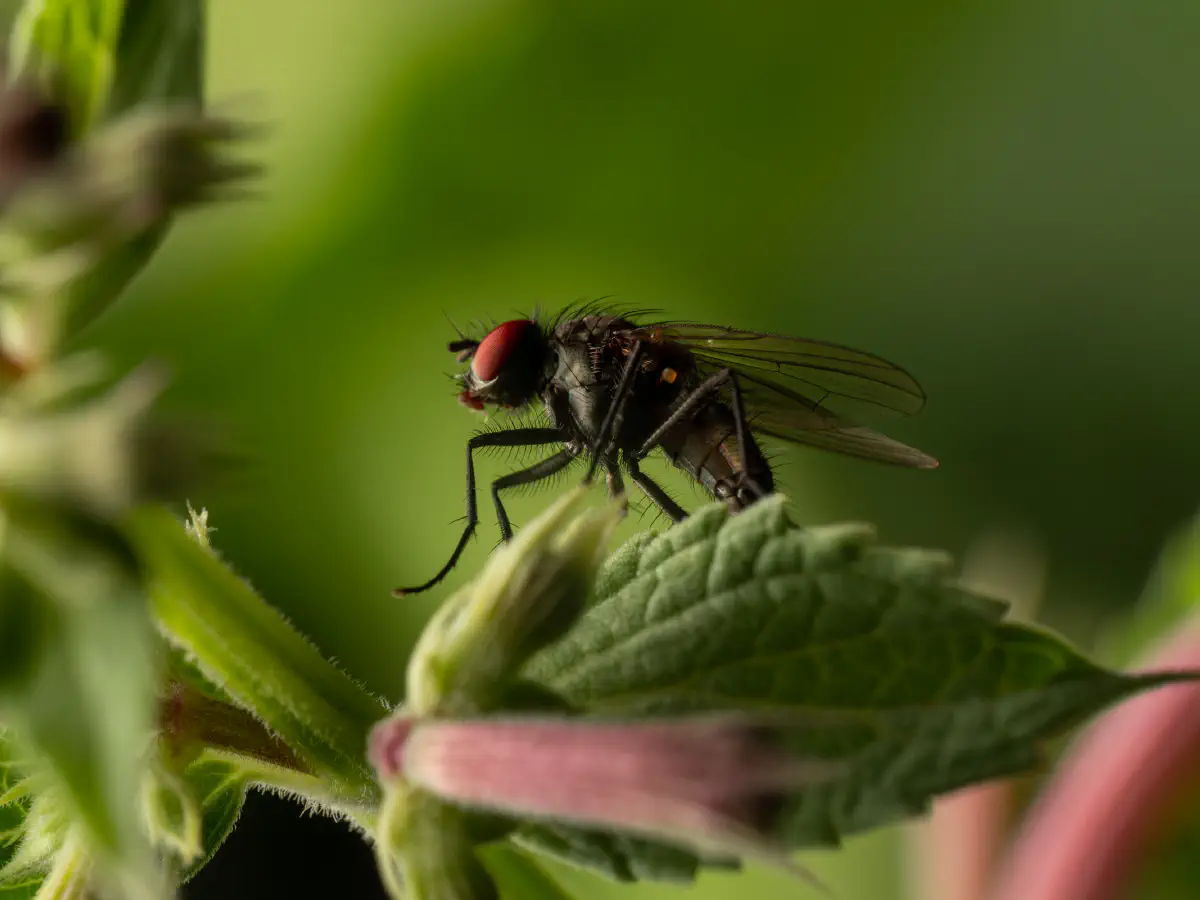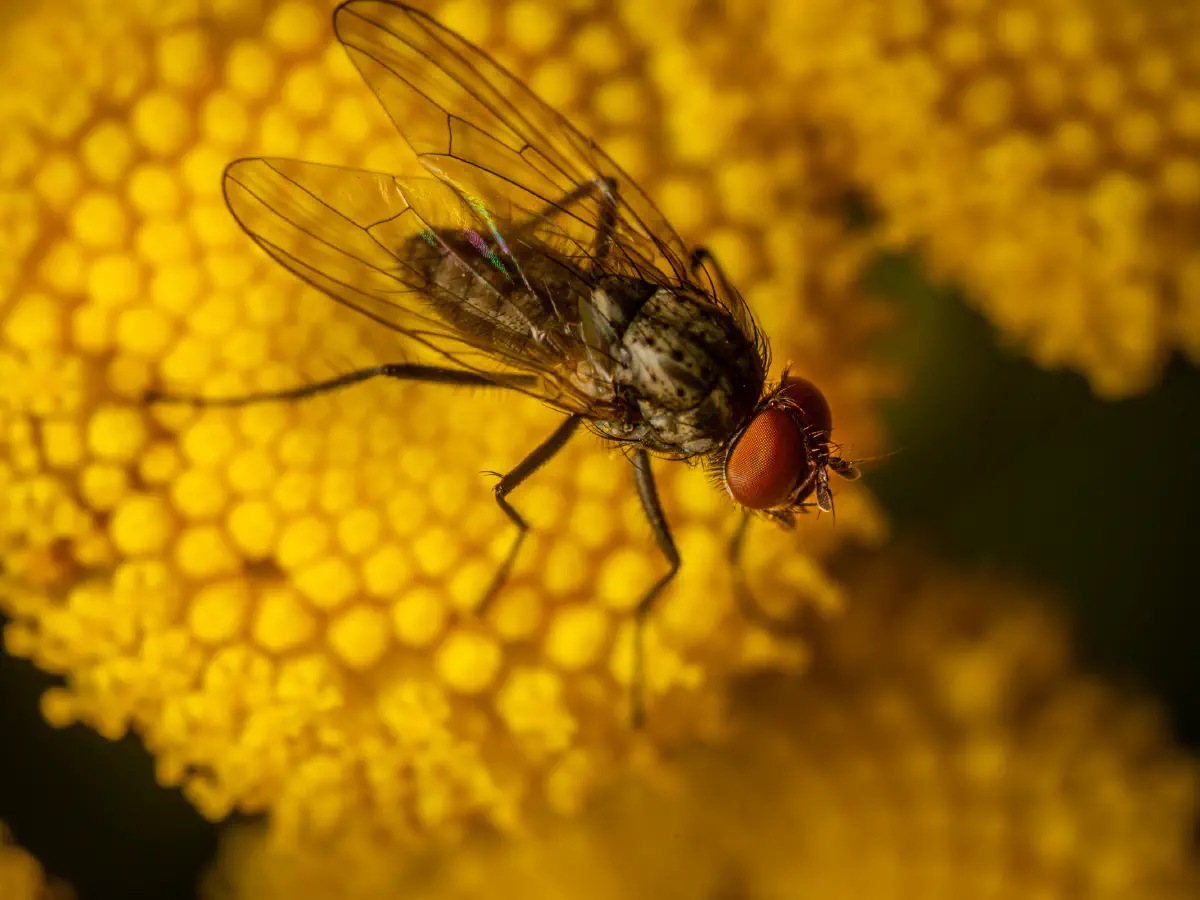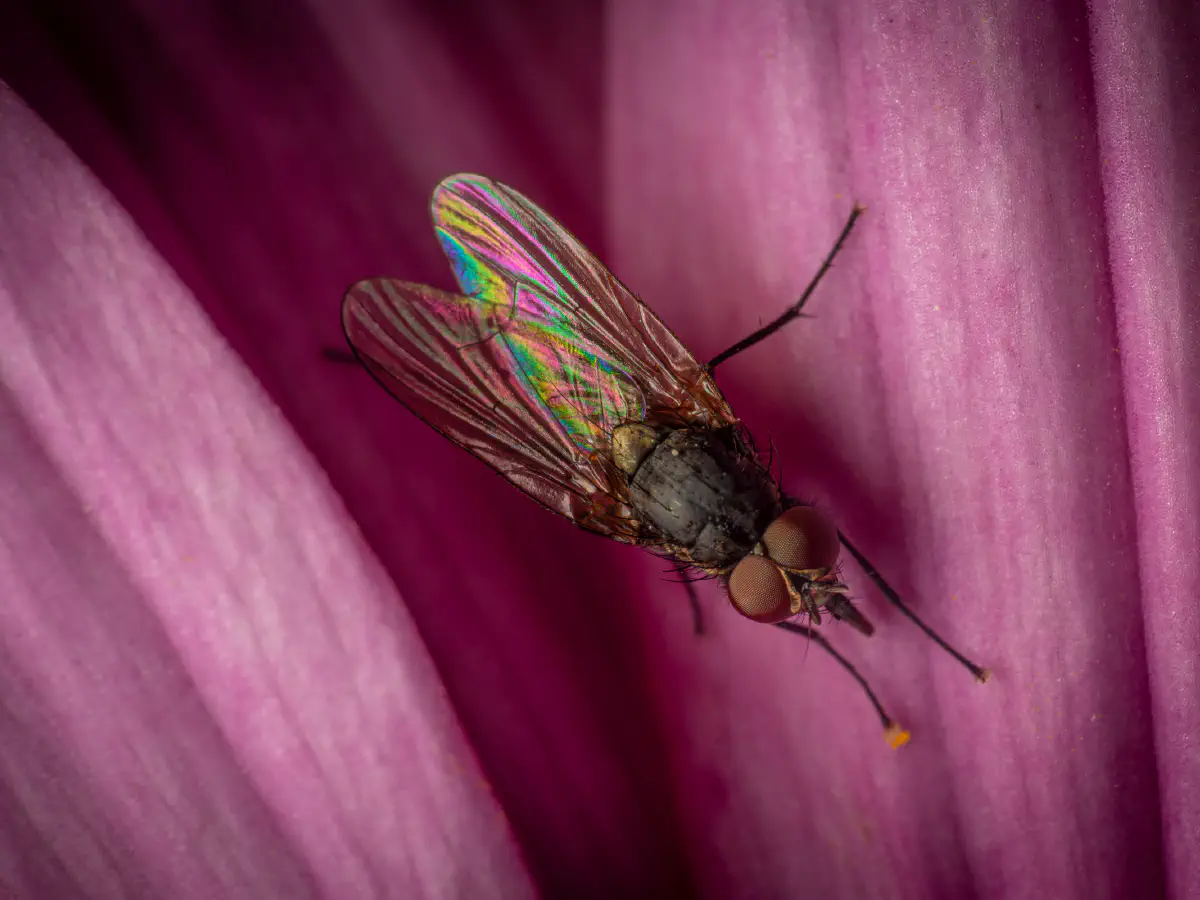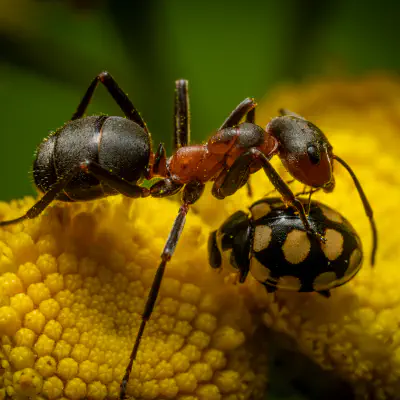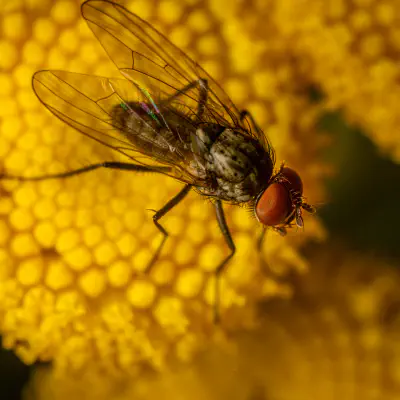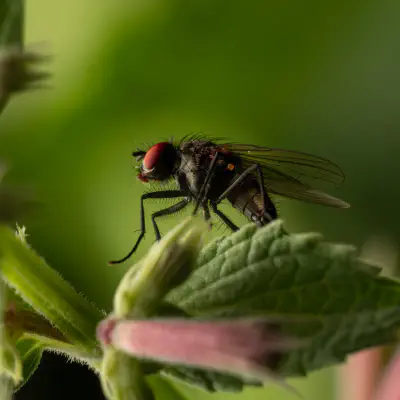Fannia canicularis is a slim fly reaching a length of from 4 to 6 mm. The white-bordered eyes meet above in the male, a condition described as holoptic. In females, the eyes do not meet. The brown-grey thorax has three black, longitudinal stripes in the males. These are much less distinct in the female. The first two segments of the abdomen are translucently yellow with a dark-brown basal colour. The dark trapezoid marks of the
males are hardly recognizable in the females. The halteres are yellowish.
